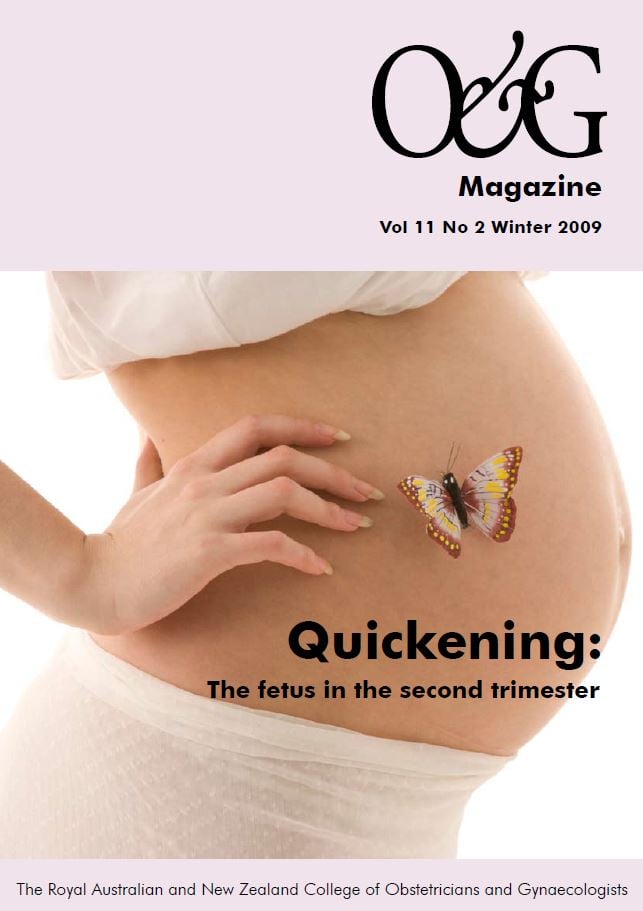Had time to read the latest journals? Catch up on some recent O and G research by reading these mini-reviews by Caroline de Costa.
Virtual reality training improves performance by registrars in laparoscopic surgery
This interesting study in BMJ prospectively and blindly assessed the effects of virtual reality training on the performance of actual laparoscopic surgery in seven departments of gynaecology in Denmark. Twenty-four first and second year registrars were divided into those trained on a virtual reality simulator (11) and those provided with the ‘standard clinical education’ of the training program. Technical performance in an actual laparoscopic salpingectomy was assessed by two independent specialists blinded as to which group the registrars belonged to, using a previously developed scale – this was the main outcome measure. The secondary outcome measure was operation length in minutes. The simulator-trained group reached a median total score equivalent to the experience gained after 20 to 50 laparoscopic procedures in standard training, whereas the control group only reached a median total equivalent to the experience gained from fewer than five procedures. The median total operation time in the simulator-trained group was 12 minutes and in the control group was 24 minutes. The inter-observer agreement was 0.79. The authors strongly recommend providing simulator training before trainees embark on laparoscopic surgery.
Larsen CR, Soerensen JL, Grantcharov TP, et al. Effect of virtual reality training on laparoscopic surgery: randomised controlled trial.
BMJ 2009;338:b1802.
Management of third stage complications
Two recent studies look at management of some common third stage problems:
A review article in BJOG summarises 15 recent reports of various methods of balloon tamponade for postpartum haemorrhage (PPH). The author (from Wollongong) points out that when PPH due to uterine atony does not respond sufficiently to pharmacological measures, then surgery is generally resorted to. However, balloon technology has been successfully used to tamponade the postpartum uterus to control haemorrhage and its use may mean that such measures as internal iliac ligation, B-Lynch sutures and hysterectomy are not required. Current balloon techniques involve inserting a rubber or silicone balloon into the uterine cavity and inflating it with normal saline. Balloon tamponade using either the Sengstaken-Blakemore tube (originally devised for oesophageal varices), the Rusch (urological) or Bakri balloons, condom catheters or multiple Foley’s catheters has been successful in 97 of 106 cases (91.5 per cent) of severe PPH in the literature examined. The author suggests that the use of these techniques, following both vaginal and caesarean delivery, should be part of our obstetric repertoire. The use of both oxytocics and antibiotics with balloon tamponade is probably desirable.
Georgiou C. Balloon tamponade in the management of postpartum haemorrhage: a review. BJOG 2009;116 (6): 748-57.
In a study from Florida of the use of rectal misoprostol (RM) versus prostaglandin F2α (PGF2α) for retained placenta after second trimester delivery, the authors note that retained placenta is a common cause of morbidity associated with second trimester delivery. Traditionally, manual or surgical evacuation of the placenta under general anaesthetic has been used, with the risks of haemorrhage, infection and uterine perforation. The study was performed retrospectively, as obstetricians at the hospital concerned routinely used either RM or PGF2α if the placenta was not delivered within 30 minutes; 161 women received RM, 142 received PGF2α. If the placenta was not delivered within two hours, surgical removal was performed. Women in the PGF2α group were found, on average, to deliver 14 minutes after the drug was administered. Women in the RM group required, on average, 54 minutes until delivery of the placenta. No increase in complications of the third stage was noted with expectant management of up to two hours. The authors conclude by recommending the use of PGF2α for third stage management in second trimester delivery.
Sundaram S, et al. Rectal misoprostol vs 15-methyl prostaglandin F2α for retained placenta after second trimester delivery. Am J Obstet Gynecol. 2009; 200(5) May; e24-6; Epub 2009 Jan 10.
Best practice in placenta accreta
This retrospective cohort study from two tertiary teaching hospitals in Utah, United States, was published in BJOG. Seventy-six cases of placenta accreta were studied retrospectively to determine which management interventions were associated with reduced maternal morbidity. The measures of morbidity included prolonged intensive care unit admission; large volume blood transfusion; coagulopathy; injury to ureters or other reasons for return to theatre both early and late; intra-abdominal infection; and hospital readmission. The study found that when accreta was suspected, planned caesarean hysterectomy without attempting placental removal was associated with a significantly reduced rate of early morbidity compared with cases in which placental removal was attempted. Women with preoperative bilateral ureteric stents had a lower incidence of early morbidity compared with women without stents. Hypogastric artery ligation did not reduce maternal morbidity. Other methods of management were not examined. The authors conclude that caesarean hysterectomy with preoperative ureteric stent placement should be recommended in all women with suspected placenta accreta.
Eller AG, Porter TF, Soisson P, Silver RM. Optimal management strategies for placenta accreta. BJOG 2009; 116(5): 648-54.





Leave a Reply